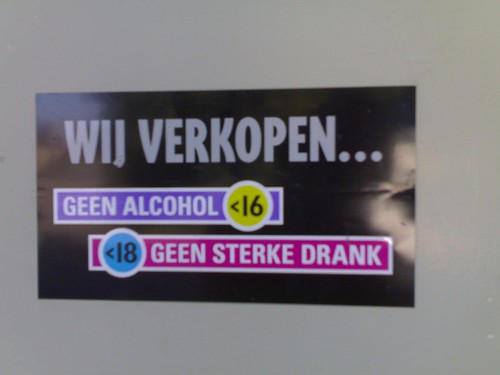Les empiezo contando cuál es el procedimiento en los trenes. Supongamos que querés tomar un tren desde X hasta Y. Como sos responsable, vas a ir a la oficina de tickets o a las máquinas expendedoras a comprar los boletos; dependiendo del hora hay algún descuento (luego de las 9am los días laborables) si tenés una tarjeta de descuento (que es válida pata tres pasajeros: el titular y dos más). Pero, vos seleccionás las tarifas y destinos correctos. Luego vas a la plataforma a esperar por tu tren. Todos pueden ingresar a las plataformas de hecho. Cuando tu tren llega, sólo te subís y buscás un asiento. Cuando llegás a tu destino o estación de combinación, te bajás del tren. Finalmente, vas a lo que fuiste a hacer.
No hay ningún sistema automatizado en absoluto. Para los ómnibus es algo así también. Le pagás al chofer si corresponde. Si no, te subís y no le decís nada, buscando un asiento si hay. Esto es porque seguramente tomaste otro bus/tranvía/subte y el boleto es válido aún para la combinación.
Más aún, en La Haya y Ámsterdam (al menos) el ingreso y pago puede hacerse no sólo al chofer, sino también con unas máquinas "tontas" que sólo ponen un sello en una tira de boletos prepagados, válidos en toda Holanda (para buses, tranvías y subtes). Vos elegís el precio correspondiente con respecto a tu destino. Si llevás efectivo, vas al chofer y pagás.
A veces, algunos inspectores te van a pedir que le mostrés tu ticket en el tren/bus/tranvía/subte y la tarjeta de descuento si corresponde. Si algo está mal, tenés que pagar una multa, que la podés pagar en efectivo a ellos, o luego cuando te llegue una factura a tu casa si en ese momento no tenés plata.
La cosa más impresionante es ver cómo la gente va y se preocupa por pagar. Más impresionante es en buses/tranvías/subtes porque los inspectores aparecen de vez en cuando y tenés más paradas y cortas distancias. Personalmente, me siento avergonzado cuando no puedo pagar (ej. el bus está muy lleno) y la gente se preocupa por esto. Es como un autocompromiso a hacer las cosas bien.
Ahora, ¿qué pasaría si esto lo aplicaríamos en Salta? Evidentemente, aparecerán los "vivos" y ya está, nada funcionaría incluso el primer día. Por supuesto, aquí se puede ver que hay algunos "vivos" que no pagan, pero son una real minoría.
Como conclusión, el único control de acceso a los transportes públicos es el respecto al otro, con un poco de ayuda de las multas para evitar el descontrol. Impresionante, ¿no les parece?

Before coming here I imagined that the control system, or entrance selling system for trains, buses and other public transportation system were really advanced and sophisticated, with an excellent passenger entrance control, or even automated system to obtain so. Now that I'm here, I laugh myself...
I will talk about how it works in the trains. Suppose you have to take a train, from station X to station Y. As you are a responsible guy, you go to the desk or machines and buy your tickets; according to the time there is some discount (after 9am on working days) if you have a discount card (which is valid to three passengers: the holder and two more). But anyway, you select the correct destinations and applicable fares. Afterwards, you just go to the track and wait for your train. Everybody can get to the track indeed. When your train arrives, you just get in. When you arrive to your destination or combination station, you get off of the train. Finally, you leave the station and do what you have gone for.
There is no automatized control whatsoever. For the bus is also like this. You pay to the driver if corresponds. If not, you just take the bus and take a sit if there is one, giving no explanation to the driver. This is because, surely you have taken another bus/tram/metro and your ticket is still valid for the combination.
Even more, in Amsterdam or The Hague (at least) this check-in can be done not only for the driver, even with some "dummy" machines that just put a stamp in prepay set of tickets, valid in all The Netherlands (for buses, tram and metro). You select the corresponding fare according to your destination. If you bring cash, you will go to the driver to pay.
Sometimes, some inspectors will require you show your ticket in the train/bus/metro/tram and the corresponding discount card if aplicable. If something is wrong, you have to pay a fine, that can be paid in cash to them, or later when the invoice arrive to your home if you don't have the money there.
The most impressive thing is to watch how people go and worry for paying. This is more impressive in bus/metro/tram because the inspectors rarely appear and you have less both stops and distance. Personally, I feel embarased when I cannot pay (p.e. the bus is crowded) and people worry to do so. This is like a self-commitment to do the things right.
Now, what about Salta. What will happen if this system is applied in buses?? Evidently, there will appear the "smarts" and that is, everything wouldn't work even for one day. Of course, here you can see some "smart" people that don't pay, but they're really the minority.
As a conclusion, the only access control to public transportation is the respect to each other, with the help of non-deviating fines. Impressive, isn't it?









.jpg)